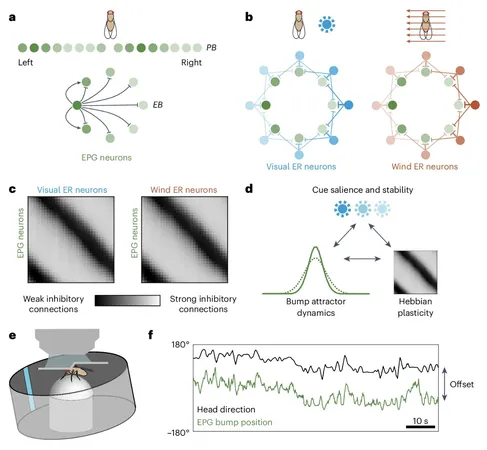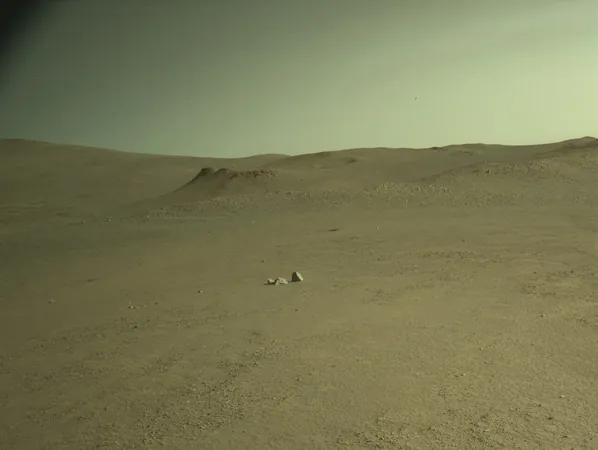
Unlocking the Secrets of Fruit Fly Navigation: How Their Tiny Brains Map the World
2025-08-26
Author: Jacques
The Amazing World of Navigation in Animals
Navigating the complexities of their environments is crucial for both humans and animals, relying on intricate cognitive processes. A pivotal element of this navigation system is known as the head direction system, which functions as an internal compass, continuously tracking the direction an animal faces. But how does this neural network operate at a fundamental level?
Groundbreaking Research at Harvard
A team of researchers from Harvard Medical School has shed new light on the remarkable processes by which fruit flies, or Drosophila, represent head direction. Their study, recently published in Nature Human Behavior, delves into how these tiny brains create mental maps of their surroundings.
Decoding Navigation in Fruit Flies
According to the researchers, led by Melanie A. Basnak and Anna Kutschireiter, navigating requires the interpretation of various spatial cues that differ in informativeness. Their investigations revealed that the head direction system of fruit flies operates both as a ring attractor and a topographic map.
Innovative Techniques Unveiled
Employing advanced techniques like population calcium imaging, the team was able to monitor the activity of neuron populations in the fruit fly brain, rather than just individual cells. This cutting-edge method captures the influx of calcium ions as neurons fire, providing deeper insight into their neural responses.
Revolutionizing Our Understanding of Cues
Through their innovative experimental setup, which included a virtual reality environment controlled by the researchers, the team discovered that when faced with conflicting cues, flies prioritized the more informative ones. Interestingly, familiar cues were deemed more reliable, heavily influencing navigation strategies.
A Model for Future Innovations
Their research introduces a model network based on the ring attractor concept, laying groundwork that could enhance existing models of spatial navigation. The implications extend beyond fruit flies, potentially steering advancements in bio-inspired robotics and AI systems.
The Balance Between Stability and Flexibility
Ultimately, the researchers conclude that their findings highlight a critical trade-off in the brain's navigational centers: the balance between stability and flexibility in adapting to an ever-changing environment. This nuanced understanding opens exciting avenues for future research and technological development.









 Brasil (PT)
Brasil (PT)
 Canada (EN)
Canada (EN)
 Chile (ES)
Chile (ES)
 Česko (CS)
Česko (CS)
 대한민국 (KO)
대한민국 (KO)
 España (ES)
España (ES)
 France (FR)
France (FR)
 Hong Kong (EN)
Hong Kong (EN)
 Italia (IT)
Italia (IT)
 日本 (JA)
日本 (JA)
 Magyarország (HU)
Magyarország (HU)
 Norge (NO)
Norge (NO)
 Polska (PL)
Polska (PL)
 Schweiz (DE)
Schweiz (DE)
 Singapore (EN)
Singapore (EN)
 Sverige (SV)
Sverige (SV)
 Suomi (FI)
Suomi (FI)
 Türkiye (TR)
Türkiye (TR)
 الإمارات العربية المتحدة (AR)
الإمارات العربية المتحدة (AR)